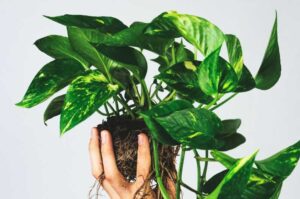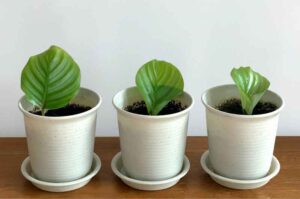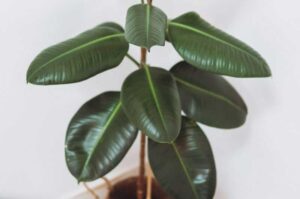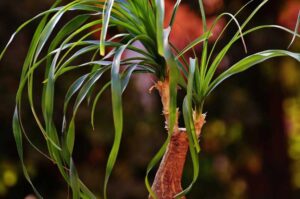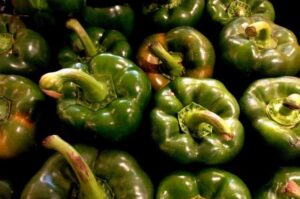Bottom watering not reaching the top- Is Everything okay?
Bottom watering or top watering is your choice; both are equally beneficial for plants. But as a novice gardener, bottom watering can be overwhelming for you. And there may be a plethora of questions that may cross your mind.
For instance, is the bottom watering technique beneficial? Are you doing it the right way? Are there chances of overwatering? Can you use it for all plant types? And most importantly, bottom watering does not reach the top. Is it okay, or is something wrong? This blog answers your last question of why bottom water is not getting the top.
No, it is not okay if bottom watering is not reaching the top. It may happen due to several reasons, like using severely compacted soil or the soil having excess clay. Moreover, if the watering tray has inadequate water, there are no drainage holes in the pots, or stones block the holes, bottom watering fails to reach the top in such conditions.
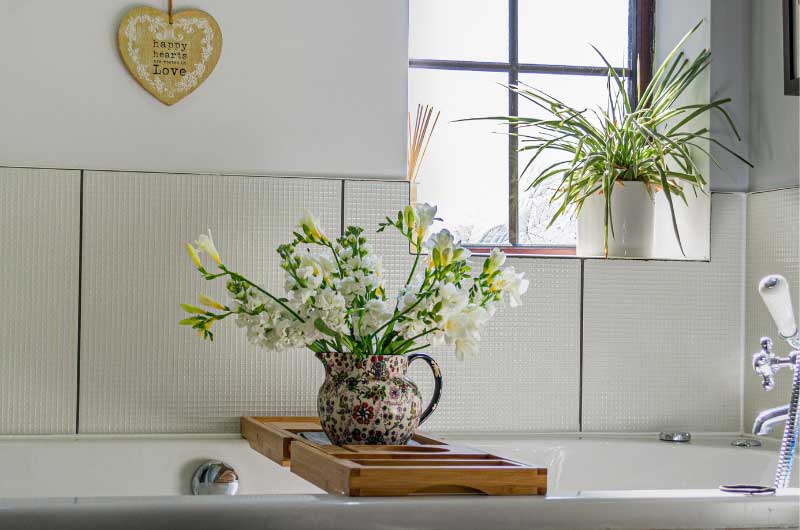
Let’s find in detail each factor responsible for bottom water not reaching the top.
5 Factors preventing bottom water from reaching the top
When you provide the right conditions to your plants, water can readily travel through roots and spread throughout the plant. But the below-given conditions prevent the soaking of water through bottom watering. Make sure your plants have none of the below-mentioned problems:
1. No drainage hole in your pot
Drainage holes in the planter play the most crucial role in bottom watering. No drainage holes mean no capillary movement of water through the roots to other parts of the plant.
It results in a slow movement of water through the pores of the pot, only if the pot is made up of clay or soil. So ensure your pot has enough drainage holes to allow the water to seep through.
2. Blocked drainage holes
Another reason for bottom watering not reaching the top is the blocked drainage holes of your pot. These blockages may be due to stones lying at the bottom of the pot preventing the bottom watering process through capillary movement.
So if there are stones at the bottom of the pot, make sure to fill your water tray with enough water so that water reaches at least 1 inch above the stones.
3. Uneven water level or tilted water tray
You are in a hurry and keep the watering tray tilted; the efficiency of bottom watering decreases. The tilted tray will have varying water levels. Therefore, it reduces the efficiency of the watering procedure.
So make sure the watering tray is balanced.
4. Inadequate water in the watering tray
The quantity of water in the watering tray directly depends on the bottom watering procedure. If there is inadequate water in the watering tray, the rate of bottom watering would automatically decrease.
5. You are using compact soil
Water absorption depends upon the different types of soils used for your plant.
If you use compact soil, there are high chances of reduced bottom watering rates. Compact soil doesn’t allow water to seep through it efficiently.
So using well-aerated soil that allows proper drainage is best for plants and watering.
How often should you bottom-water the plants?
Bottom watering is a significant way to avoid overwatering your plants. But it would help if you consistently practice it at a scheduled time.
It is recommended to bottom-water your plants once in 3-4 days. It allows the soil to hydrate your plants and helps in the equal distribution of minerals in the soil. Now the minerals are readily available for absorption.
Other factors that influence bottom watering are temperature, humidity, and winds. These factors affect the drying of water, which ultimately decides how often to water your plants.
When to avoid bottom watering?
As per agriculture experts and research, it is concluded that there are specific times to water your plants, especially if you are bottom watering. This watering time depends upon certain weather conditions. For example, here, we have mentioned which is the best time for bottom watering in various temperature conditions.
1. During cold days
It is recommended to water your plants during colder days as the soil frequently is more heated than the environment. So the plant needs more water, and you can conveniently bottom water at night to allow maximum water absorption.
2. During hot days
Water spreads throughout the plant but quickly evaporates from the leaf surface when you water a plant in a hot environment.
It is always recommended to water your plants in the morning during hotter days. It’s so because, during hot weather, the soil is warm, so the water evaporates faster than usual, leaving behind dry soil.
Moreover, there is excess water loss because of the lenticular or stomatal activities of the plant. A lot of water is therefore wasted in the form of water vapors.
3. During mid-day
Midday is not an appropriate time to bottom water your plants. As the burning sun’s rays heat the environment, the water in the watering tray evaporates faster. Moreover, as the temperature rises, plants lose water at speeds double that of morning or evening.
That’s why you should avoid bottom watering during midday unless it’s urgent.
Common mistakes while bottom watering
As the famous saying goes, “to err is human” you, too, may mess up with your plants while bottom watering. So here are a few common mistakes you can commit while bottom watering:
Using bad quality water
Using bad quality water is the biggest harm you can do to your plants. You all know tap water contains chlorine, so if you use tap water, make sure to use a dechlorinator that neutralizes chlorine in minutes. If anyway you are using tap water, make sure it’s uncontaminated.
Forgetting to take your plants out of the watering tray
If you forget to take your plants out of the watering container, it will act as a booster shot for root rot. However, some plant keepers prefer to keep their plants in water for several hours or overnight.
Some tips for bottom watering
- Remember to remove the plants from the water container after watering.
- Large containers or pots will take longer to soak water than small ones. So group the plants accordingly.
- Terracotta pots will take more time to absorb water than plastic containers.
Thus, bottom watering is an exciting way to water your plants, especially if you are a beginner, as you learn a lot about various plants. Also, you can combine top-down and bottom-watering as per your plant’s needs. And for effective bottom-watering, your plants need 15-20 minutes of soaking in a water tray.
The soil retains moisture for three or four days; you can water it again when the soil dries out. And if the water is not reaching the top, you’ll have to check out all the possible reasons mentioned above.
If you are a novice gardener and want to learn how to keep your plants thriving through bottom watering, check out all our blog topics related to bottom watering.
- Can you overwater by bottom watering
- Can I bottom water plants overnight?
- Should you go for bottom watering plants in terracotta pots?

